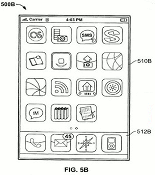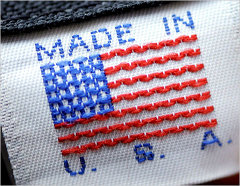
There was an interesting blog post a couple of weeks ago entitled "1.0 is the loneliest number" by Matt Mullenweg where he discussed how to bring something to market. Arguing that ideas need oxygen to grow and if they stay in development for too long then they are actually dying. Matt says:-
If you're not embarrassed when you ship your first version you waited too long. Usage is like oxygen for ideas...every moment you're working on something without it being in the public [domain] it's actually dying, deprived of the oxygen of the real world.
Using Apple as an example, Matt highlights how the iPod was first reviewed as "No wireless. Less space than a nomad. Lame." and "$400 for an MP3 player!... it wont sell, and be killed off in a short time...". The iPad has received similar reviews for it's lack of flash support or camera or weight - but as Matt says, it shipped. This now means Apple have a chance to understand how it works in real life - it now has the oxygen it needs to develop.
The reason for this is that it's easier to critique than it is too create. Creating something new is hard, however once the idea has been floated, it is much easier to then shape this - adding to it, extending it - helping it to grow.
As with many things, the 80/20 rule normally applies here with only 20% of features being used 80% of the time. This means you don't have to wait for it to be perfect or for it to contain everything - you simply need to get it out there. As author Jay Heyman says:-
“Perfect is the enemy of good – if you keep prodding, tweaking and tampering with something good, trying to turn it into something perfect [..] it is possible you might never get there at all, in effect turning a good idea into no idea.”
You also can't beat first mover advantage; the fact that Tesco was first to launch it's loyalty programme gave it a distinct advantage over competitors subsequent attempts.
The increasing connectedness of consumers however also means that this critique is more readily available and almost immediate in it's feedback.
At Loyalty World this month, Nectar provided details on their new iPhone app. Members wanted it - the app has been downloaded 280k times and was #3 in the free download chart within 4 days. Members used it - up to 57% of users opt in to mobile offers, generating £4.4m in incremental sales in just 2 months.
But what was their feedback?
Well Jan-Pieter Lips, MD of Nectar indicated that the feedback had been "great start". This wasn't a negative though - this was recognition that consumers expect to be able to feed into the development of products and services. Consumers are now used to having their say on almost everything a brand does and increasingly are expecting the brands to listen.
Gap is the classic example of this. Forgetting that the brand is where it is because of it's loyal customers, they failed to consult them on their recent aborted logo change. Within just a week of launching it's new logo, the brand backtracked quickly saying:-
“Ok. We’ve heard loud and clear that you don’t like the new logo. We’ve learned a lot from the feedback. We only want what’s best for the brand and our customers. So instead of crowdsourcing, we’re bringing back the Blue Box tonight.”
You can argue how much of this feedback was as a result of genuine concern/dislike for the logo versus simply a "lynch mob" mentality, but either way, once in the spotlight, it's hard not to pay attention.
Whether it's launching a product, app or loyalty programme, the advice would seem to be:-
- Get your product out to market quickly - Making sure it is "good", but not waiting for it to be "perfect"
- Listen to consumer feedback - Let consumers tell you what's important, what's missing and what's a priority
- Apply feedback and repeat
It's certainly easier to critique than to create so let your customers help out - turning a good idea into a great one and at the same time allowing them to feel part of the process.

